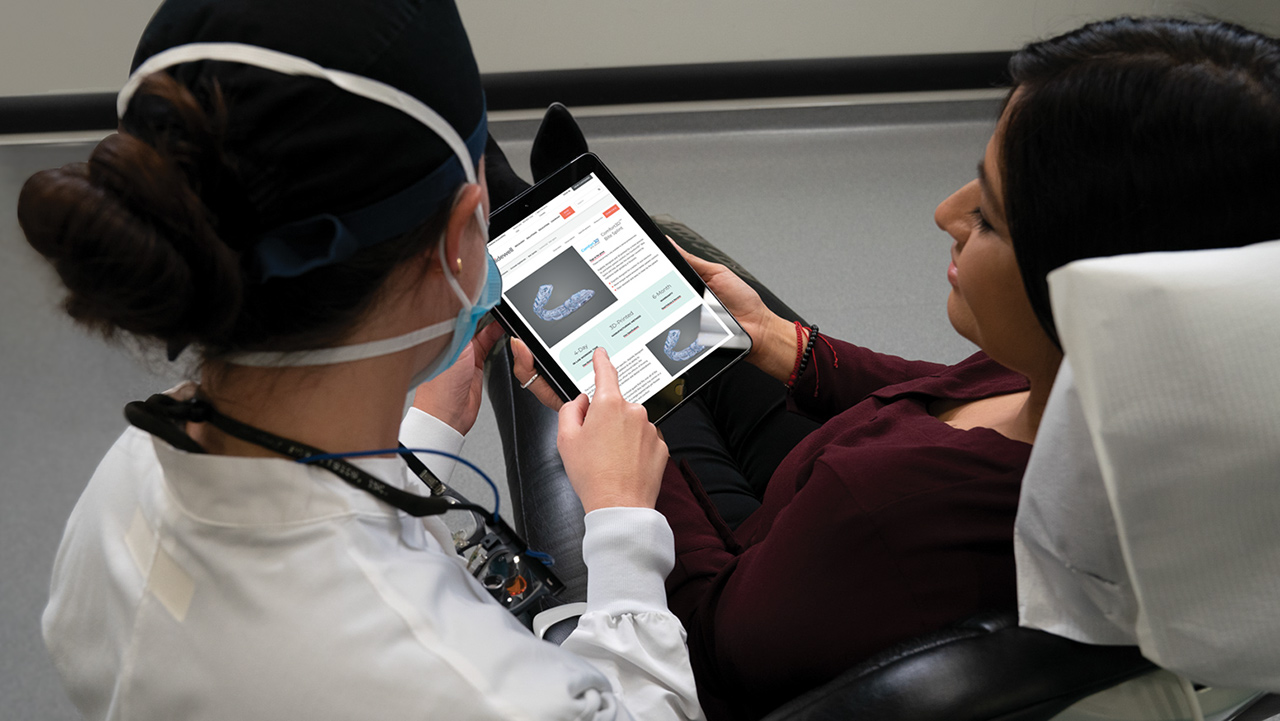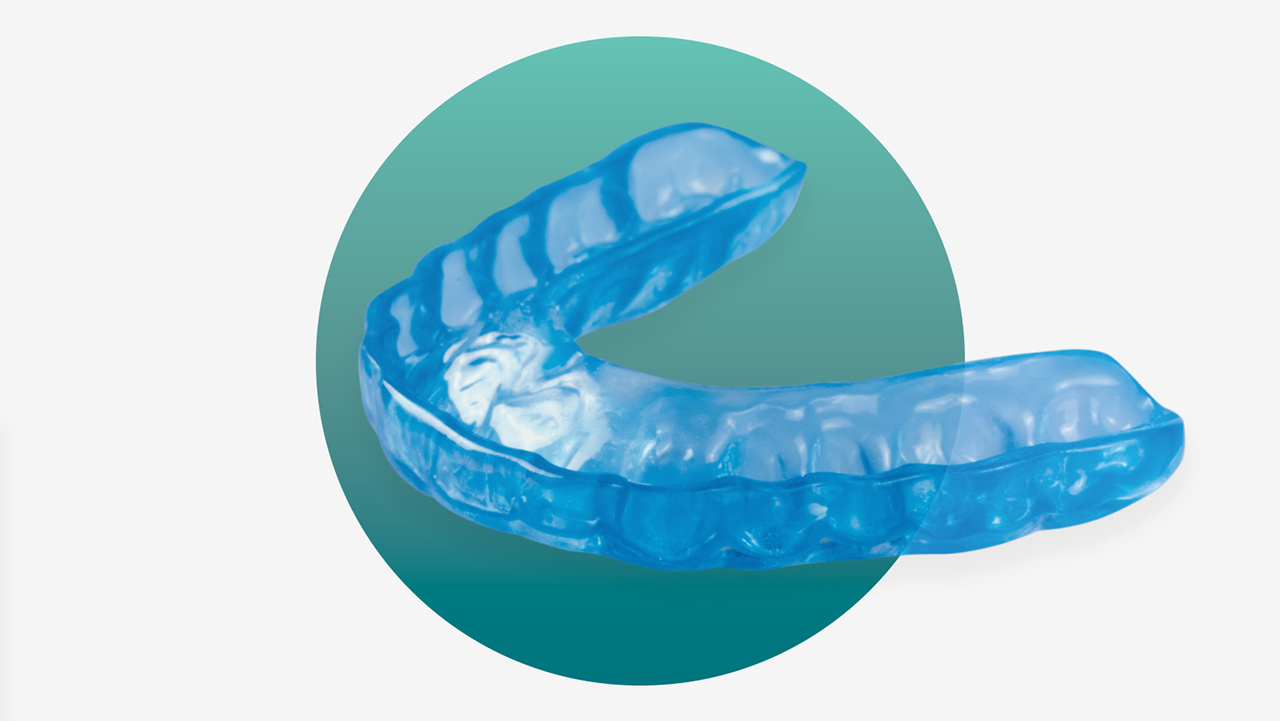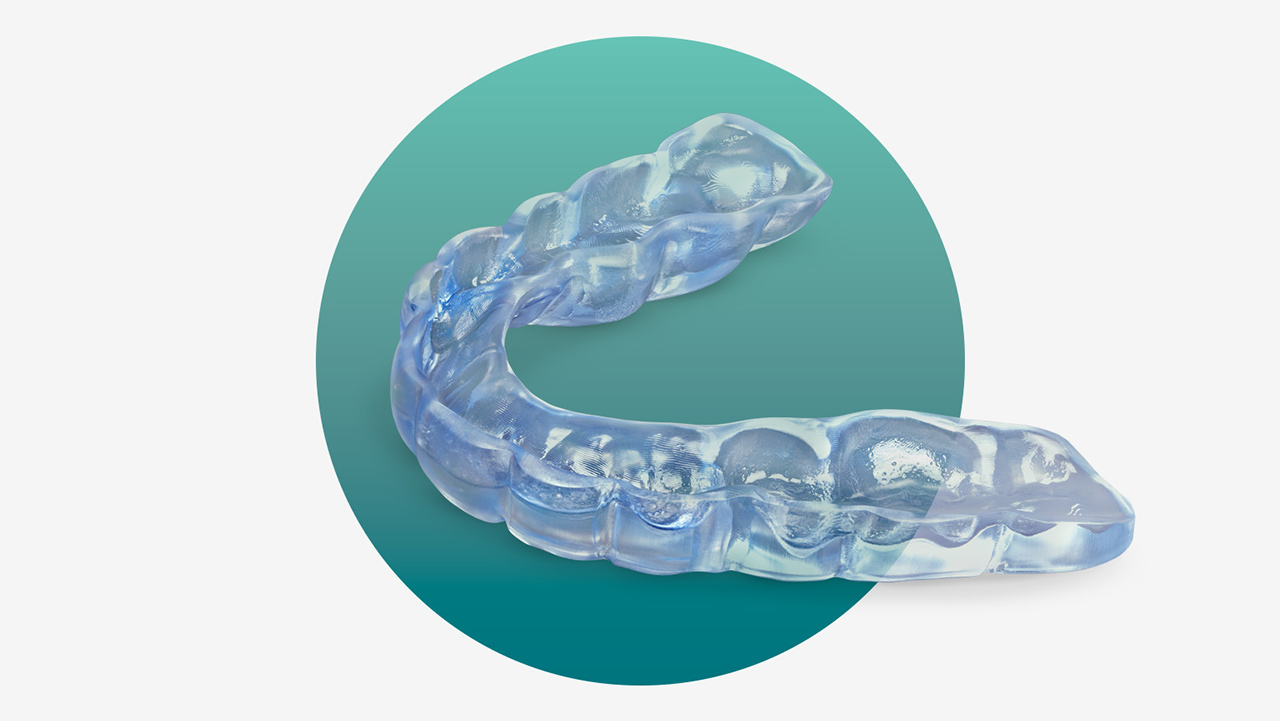The CLEARsplint is unique due to its flexible and self-adjusting properties. Because of its clear color, the CLEARsplint can be used as both a night guard and a day splint. Ramps and guide planes can be added to reposition the mandible if necessary. Fabricated from a modified composite material, the device self-adjusts in warm water, allowing for the closest fit possible.
How to Choose the Right Bite Splint for Your Patients
Dr. Bradley Eli discusses various bite splints available to clinicians and how to select one.

Choosing which bite splint to prescribe a patient is an unnecessarily complicated process. Clinicians are provided with an array of options, but they often don’t understand how each of those options differ. In this blog post, I’ll discuss how you can easily prescribe a bite splint that fits your patients’ specific needs.
Diagnosing the Root of the Problem
Even though most patients can benefit from wearing a bite splint, diagnosing the root of the problem is vital to ensure the correct treatment path is followed. Examining the main causes of a patient’s symptoms can be completed by answering several key questions:
- How long has the problem been present, and how long will it be present for?
- Is the problem progressive, and does it require an addition to the prevention plan?
- How well will the problem respond to care? How will the plan expand if the symptoms persist?
These questions allow clinicians to find the true reason for a patient’s condition and prescribe a solution that will bring long-term relief and protection.
Understanding the Three Categories of Oral Devices
Understanding the different categories of oral devices enables clinicians to develop a solution that is best for each individual patient. It also helps patients themselves understand why they need a specific treatment. Although there are a number of oral devices available, they can best be divided into three categories: temporary devices, protective devices and therapeutic devices.
The most common is a temporary oral device, which is available over the counter for a low cost and can be purchased by anyone. While they are helpful in many conditions and have a low treatment complexity, temporary devices should not be used if the patient has significant dysfunction or a prior history of jaw problems.
Protective oral devices are commonly prescribed by dental providers to patients who present with wear on the teeth or restorations, morning soreness, or morning stiffness. They have a low to mid complexity and are especially useful for protecting the surface of the dentition or restoration against the harmful effects of bruxism. Because of their higher cost and the often unclear differentiation between types, protective devices are underprovided.

Temporary oral devices can be bought over the counter by any patient, unlike protective and therapeutic oral devices that have to be prescribed by a dental professional.
The last category includes therapeutic oral devices. These devices are diagnosis-specific in that they are dependent on a specific symptom before being prescribed. Common symptoms include TMJ noise, TMJ pain, locking of jaw, catching and muscle pain. For a patient to be eligible for a therapeutic device, they must have multiple symptom sources and multiple years of experiencing recurring symptoms, and they must have undergone multiple prior treatments. There is also a more complex treatment protocol that often has a defined treatment duration.
Top Protective and Therapeutic Devices to Prescribe
Clinician-prescribed bite splints fall into both the protective and therapeutic device categories, as they prevent damage to dentition and restorations caused by bruxism as well as address specific symptoms associated with it. With bite splints, one size does not fit all — each splint must be chosen based on a patient’s particular condition. There are three ideal bite splints that are designated for meeting these needs: the Comfort H/S™ Hard Soft Bite Splint, the CLEARSplint® and the Comfort3D™ Bite Splint. These occlusal devices are all designed to alleviate the pain and damage associated with bruxism, so I would like to highlight how they differ from each other.
The Comfort H/S Bite Splint is the most widely prescribed bite splint, known for its superior fit and comfort. The material composition makes it stand apart from other bite splints: It is made of a 1 mm soft polyurethane inner layer for comfort and a 3 mm hard copolyester outer layer for durability. The device is available in clear, blue and pink.

As the most widely prescribed bite splint, the Comfort H/S Bite Splint minimizes the harmful effects of bruxism through its soft inner layer and hard outer layer.

Clinicians who prescribe CLEARsplint provide their patients with a bite splint that offers a flexible and versatile material.
Lastly, the Comfort3D Bite Splint is digitally designed and 3D-printed for a precise fit. The device consists of a single-layered, hard yet flexible 3D-printed resin. Because of its digital design, the Comfort3D Bite Splint offers more tongue space in the palatal area for improved patient comfort.

The accuracy and precision that goes into making the Comfort3D Bite Splint sets it apart from traditionally manufactured splints.
Specialized Therapeutic Oral Devices
Sleep and migraine prevention oral devices are two additional examples of appliances that fall into the therapeutic category. These specialized devices follow the pattern of a therapeutic splint treatment and focus more on symptoms beyond just bruxism. Sleep devices such as the Silent Nite® Sleep Appliance, EMA® and OASYS Hinge Appliance™ treat sleep-disordered breathing quickly and effectively through mandibular advancement. Migraine prevention devices like the NTI-tss Plus® and the NTI OmniSplint® are designed to prevent tension-type headaches and migraines associated with high clenching intensity.
Conclusion
Bite splints are necessary now more than ever, with the American Dental Association reporting a growing prevalence of bruxism, chipped and cracked teeth, and TMD symptoms among patients.1 Dentists have the opportunity to be proactive and not only protect against damage to healthy dentition and new restorations, but also prevent further damage. Bite splints can help prevent patients from overloading their restorations and causing excessive force that can lead to prosthetic breakage or implant failure. They are a relatively simple solution that can result in a safer approach to dentistry.
REFERENCES
- American Dental Association [internet]. Chicago: American Dental Association; c2021. HPI poll: Dentists see increase in patients’ stress-related oral health conditions. 2020 Sep 28 [cited 2021 Jul 23]. Available from: https://www.ada.org/en/publications/ada-news/2020-archive/september/hpi-poll-dentists-see-increase-in-patients-stress-related-oral-health-conditions
CLEARsplint is a registered trademark of Astron Dental Corporation. EMA is a registered trademark of Frantz Design Inc. OASYS Hinge Appliance is a trademark of Dream Systems LLC. NTI-tss Plus is a registered trademark of Boyd Research, Inc. NTI OmniSplint is a registered trademark of James Boyd.
More to Know
Magazine Article
Send blog-related questions and suggestions to hello@glidewell.com.






